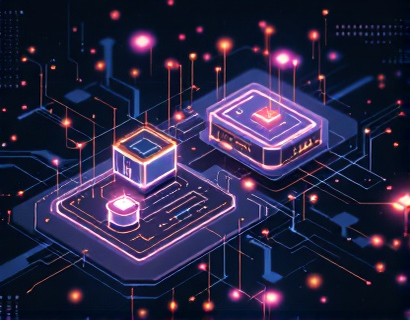Next-Gen Connectivity: Transforming Business and Personal Communication with Advanced Telecom and Internet Solutions
The rapid evolution of telecommunications and internet technologies has revolutionized the way businesses and individuals connect, communicate, and conduct operations in the digital age. This transformation is driven by advanced infrastructure and specialized software solutions that prioritize quality and customer satisfaction, ensuring reliable and efficient access to essential digital services. The impact of these advancements is profound, empowering users to navigate the modern digital landscape with unprecedented ease and effectiveness.
At the core of this transformation is the development of next-generation telecommunications networks. These networks leverage cutting-edge technologies such as 5G, fiber optics, and satellite communications to provide faster, more reliable, and wider coverage. 5G technology, for instance, offers peak data rates up to 20 Gbps, latency as low as 1 millisecond, and the ability to connect millions of devices simultaneously. This level of performance is crucial for applications that require real-time data processing and high bandwidth, such as autonomous vehicles, smart cities, and augmented reality (AR) and virtual reality (VR) experiences.
Fiber optics, another cornerstone of modern telecommunications, uses glass or plastic fibers to transmit data as light signals. This method offers significantly higher bandwidth and lower signal loss compared to traditional copper wires, making it ideal for long-distance and high-speed data transmission. Fiber-to-the-home (FTTH) and fiber-to-the-building (FTTB) initiatives are expanding rapidly, bringing ultra-fast internet to more households and businesses. This expansion is vital for supporting the growing demand for high-speed internet, especially in remote and underserved areas.
Satellite communications, while often associated with older technologies, are also undergoing a renaissance thanks to advancements in satellite design and deployment. Next-generation satellites, such as those in low Earth orbit (LEO), provide global coverage with low latency, making them suitable for international communications, maritime operations, and areas where terrestrial infrastructure is lacking. These satellites complement ground-based networks, ensuring seamless connectivity regardless of location.
On the software side, specialized solutions are playing a pivotal role in enhancing connectivity and communication. Network management systems (NMS) are essential tools that monitor, control, and optimize network performance. These systems use advanced algorithms and machine learning to predict and prevent issues, ensuring continuous and high-quality service. Network slicing, a key feature of 5G, allows operators to create multiple virtual networks on a single physical infrastructure, each tailored to specific use cases and requirements. This flexibility is crucial for industries like healthcare, where secure and low-latency connections are paramount.
Cloud computing is another transformative force in the realm of digital connectivity. Cloud services enable businesses and individuals to access powerful computing resources, storage, and applications over the internet, eliminating the need for on-premises hardware. This model not only reduces costs but also enhances scalability and flexibility. Cloud-based collaboration tools, such as video conferencing, document sharing, and project management platforms, have become indispensable for remote work and global teams, breaking down geographical barriers and fostering real-time collaboration.
The Internet of Things (IoT) is another area where advanced connectivity is making a significant impact. IoT devices, ranging from smart home appliances to industrial sensors, rely on robust and reliable networks to function effectively. These devices generate vast amounts of data that, when analyzed, can provide valuable insights and drive innovation. For businesses, IoT integration can lead to improved operational efficiency, predictive maintenance, and enhanced customer experiences. For individuals, IoT devices enhance convenience and comfort, from smart thermostats to wearable health monitors.
To support these advancements, telecom and internet service providers are investing heavily in infrastructure upgrades and innovation. This includes the deployment of small cells and macro cells to densify networks, the implementation of edge computing to reduce latency, and the adoption of software-defined networking (SDN) and network function virtualization (NFV) to increase agility and efficiency. These technologies work in tandem to create a more resilient and adaptable network infrastructure capable of meeting the demands of the future.
For businesses, the benefits of next-gen connectivity are manifold. Enhanced connectivity enables seamless communication and collaboration, regardless of location. Video conferencing tools powered by high-bandwidth networks reduce the need for travel, saving time and resources. Cloud-based applications ensure that critical business data is accessible from anywhere, supporting remote work and global teams. Additionally, IoT integration allows for real-time monitoring and optimization of operations, leading to increased productivity and cost savings. Advanced analytics and AI-driven insights further empower businesses to make data-informed decisions and stay competitive.
For individuals, the impact is equally transformative. High-speed internet access facilitates remote learning, enabling students to participate in online classes and access educational resources from anywhere. Telemedicine services, supported by reliable connectivity, allow patients to consult with healthcare professionals remotely, improving access to medical care, especially in rural areas. Smart home technologies enhance daily life, from energy management to security systems, making homes safer and more efficient. Entertainment and social media platforms benefit from low latency and high bandwidth, providing immersive experiences and fostering global connections.
The transition to next-gen connectivity also addresses some of the challenges faced by traditional networks. One of the primary concerns has been network congestion, which can lead to slow speeds and unreliable service. Advanced network architectures and traffic management techniques mitigate these issues, ensuring consistent performance even during peak usage times. Security is another critical aspect, with modern networks incorporating advanced encryption, intrusion detection systems, and zero-trust architectures to protect against cyber threats.
Environmental sustainability is another key consideration in the evolution of telecommunications and internet infrastructure. Energy-efficient technologies and renewable energy sources are being adopted to reduce the carbon footprint of network operations. For example, data centers are increasingly using solar and wind power, and optimizing cooling systems to minimize energy consumption. These efforts not only benefit the environment but also reduce operational costs for service providers.
As the demand for connectivity continues to grow, the focus on inclusivity and digital equity becomes paramount. Efforts to bridge the digital divide involve expanding internet access to underserved communities, providing affordable services, and offering digital literacy programs. This ensures that everyone can benefit from the advancements in telecommunications and internet services, fostering a more connected and equitable society.
In conclusion, the integration of advanced telecommunications and internet solutions is transforming the way we communicate, work, and live. By leveraging cutting-edge infrastructure and innovative software, these technologies enhance connectivity and streamline communication, empowering businesses and individuals to thrive in the digital age. As the landscape continues to evolve, the commitment to quality, reliability, and customer satisfaction will remain at the forefront, driving further innovation and improvement.










































